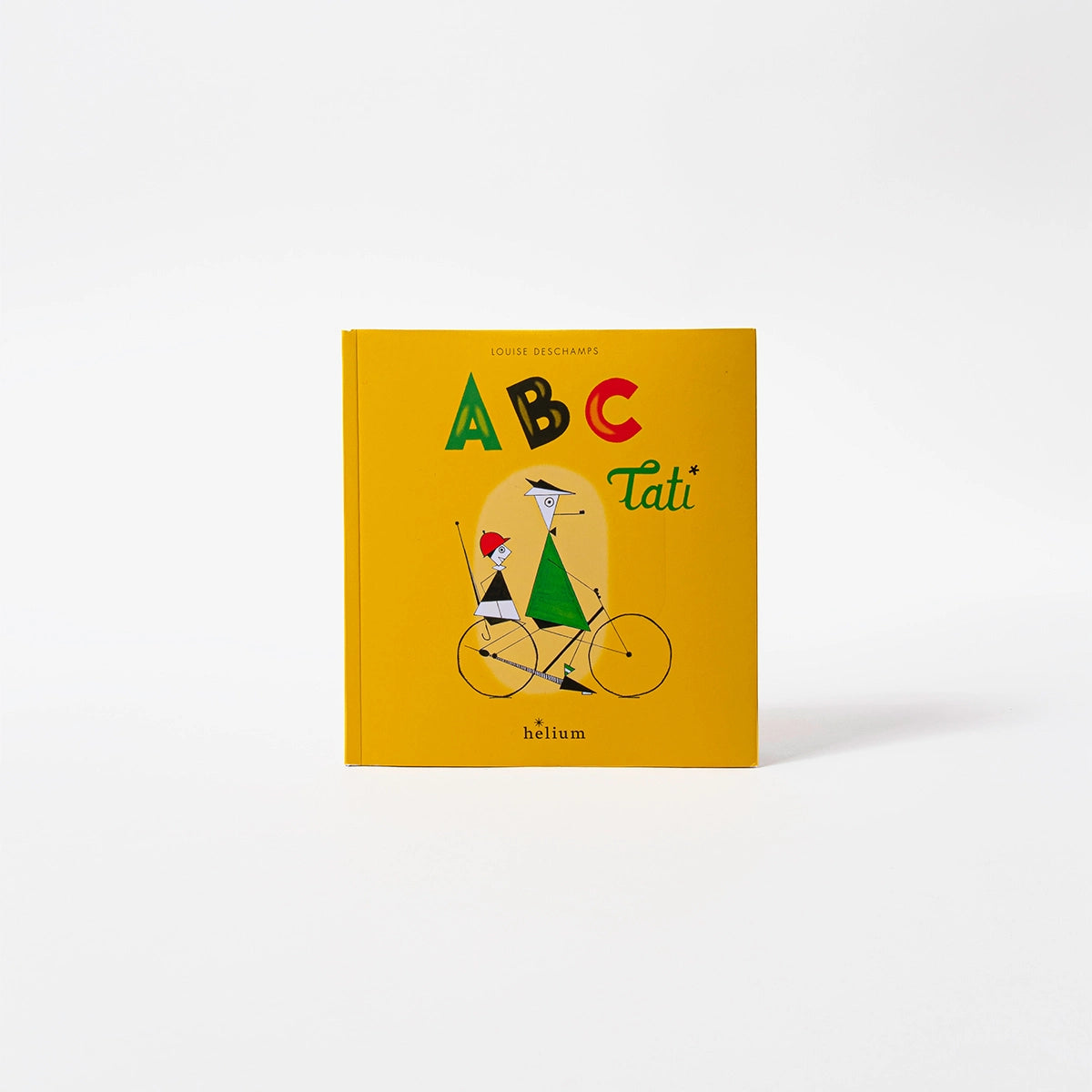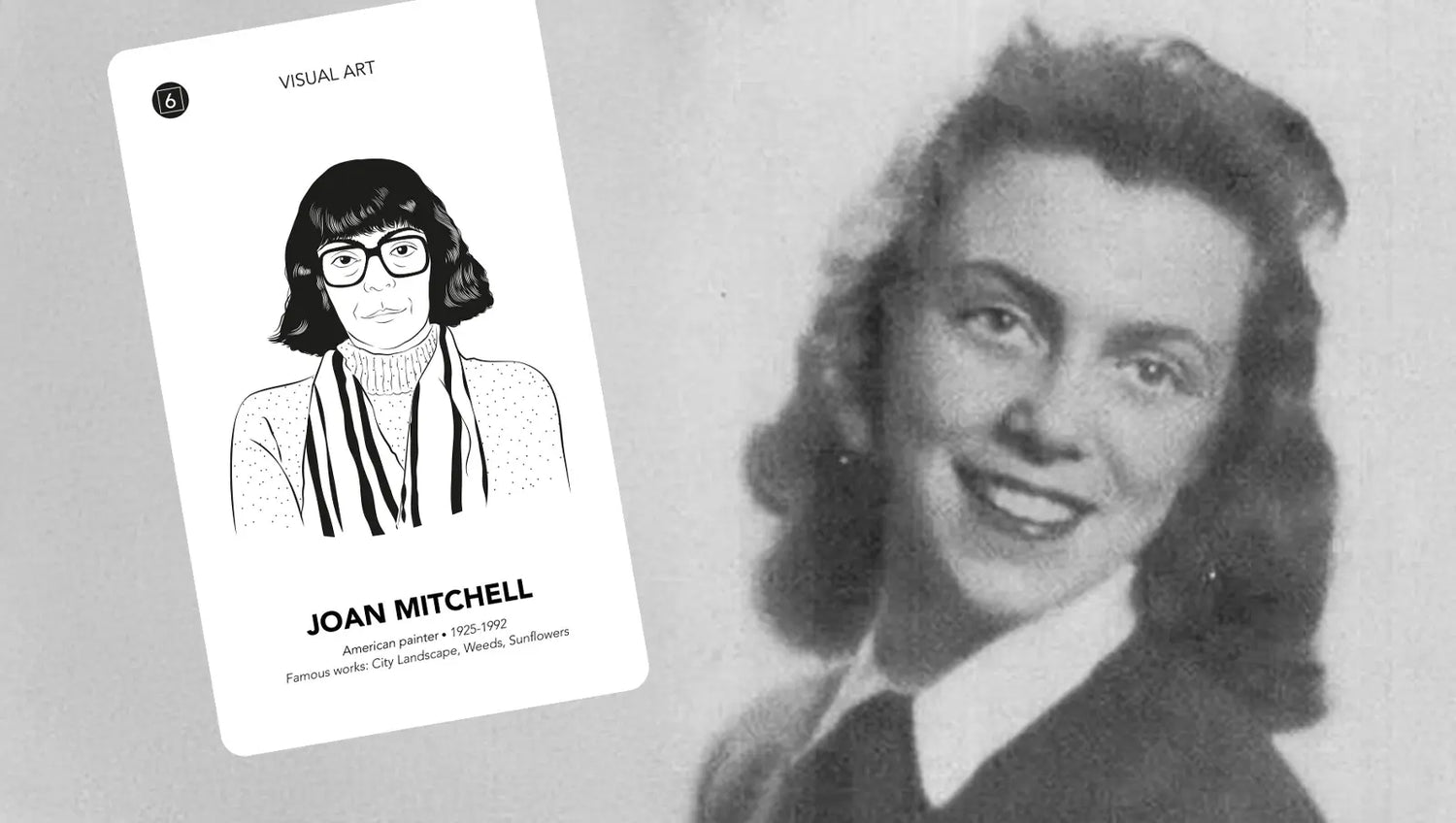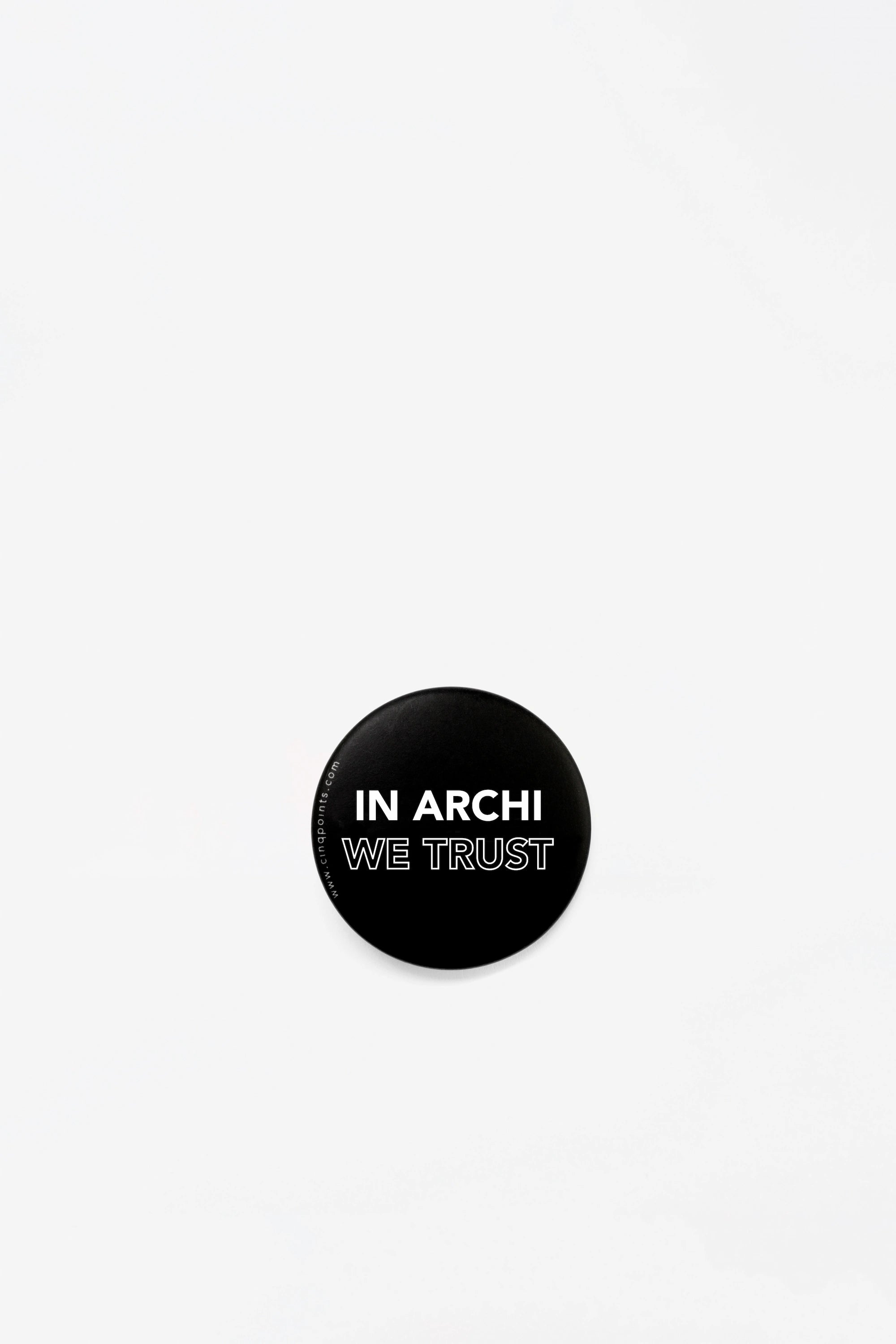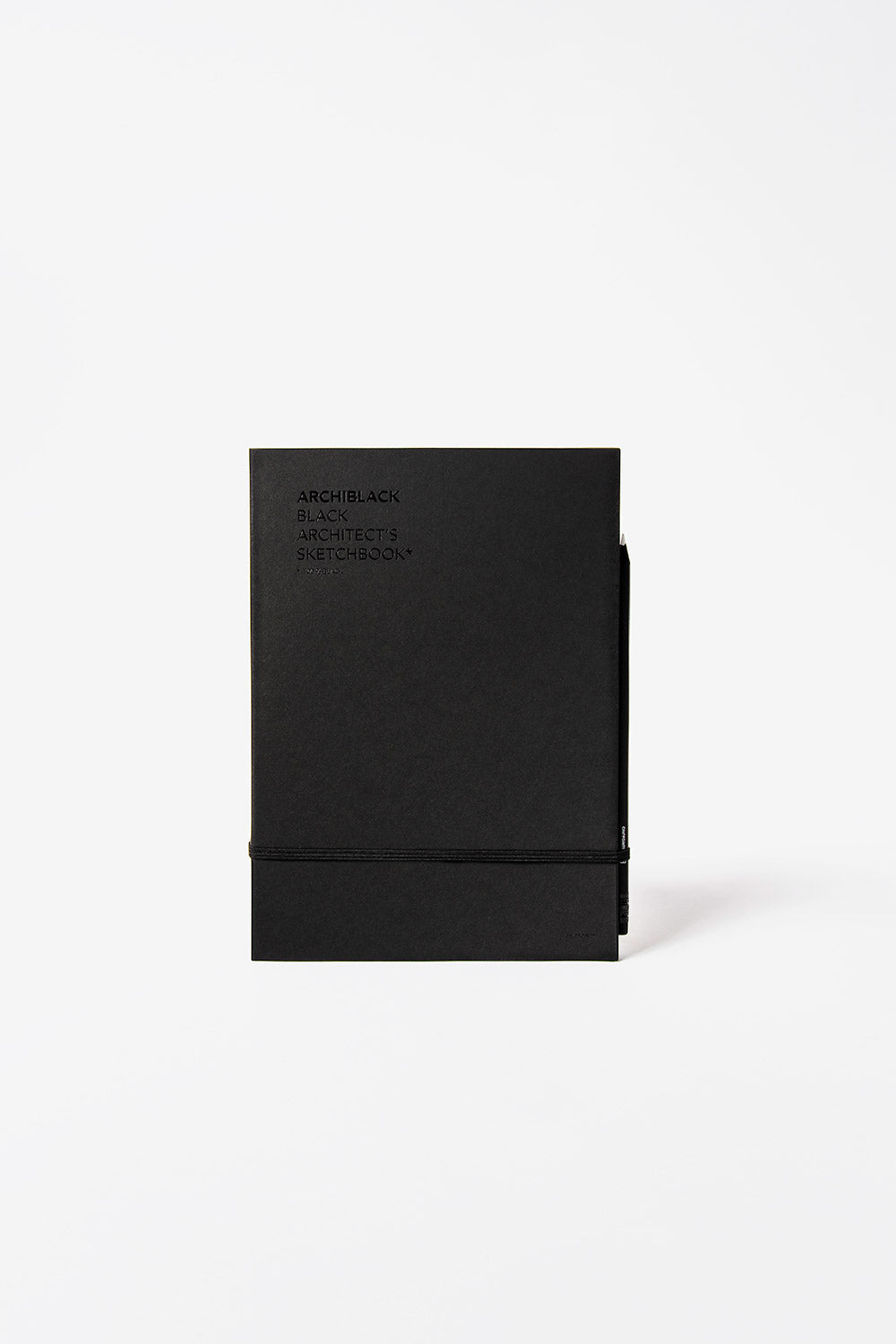Joan Mitchell (1925-1992), a Major Figure of Abstract Expressionism
Influenced by Vincent Van Gogh, Paul Cézanne, Vassily Kandinsky, and Claude Monet, Joan Mitchell was an active figure in American Abstract Expressionism. Her intense and vibrant work was fueled by her observation of nature, exploration of color, and deep emotional expression.
Her deeply personal approach to art is marked by bold brushstrokes, a striking use of color, and an intense emotional connection. Mastering a variety of techniques, she seamlessly moved between oil painting, pastels, and printmaking.
"My painting is not an allegory or a story. It is more like a poem."
The Beginnings of an Independent Artist
Born in Chicago on February 12, 1925, Joan Mitchell grew up in an art-loving family. From an early age, she was immersed in a cultural environment rich in literature and visual arts. Her mother, a poet, nurtured her love for words and imagery, while her father, a doctor, encouraged her intellectual curiosity.
She pursued a degree in fine arts at the Art Institute of Chicago, where she developed a passion for color and composition. During this time, she admired the Impressionists, particularly Claude Monet, whose paintings captivated her with their use of light and movement.
A devoted admirer of Monet, she later moved to Vétheuil, France, a village near Giverny, where the Impressionist master had once lived. Her expressive paintings were often executed on large canvases, with powerful and intense brushstrokes.
Rising in the Abstract Expressionist Movement
In the 1950s, after graduating, Joan Mitchell moved to New York, at the height of the New York School movement. She mingled with leading figures such as Jackson Pollock, Willem de Kooning, and Mark Rothko.
Unlike many female artists of her time, who often remained in the shadows of their male counterparts, she quickly made a name for herself. Her work caught the attention of gallery owners and critics, leading her to exhibit in prestigious art shows and establish herself in the contemporary art scene.
Her paintings, often created on monumental canvases, were recognized for their energy and intensity.
Paris, Jean-Paul Riopelle, and an Intense Artistic Relationship
In 1955, during a trip to Paris, Joan Mitchell met Jean-Paul Riopelle, a renowned Canadian painter. This encounter marked a turning point in both her career and personal life. At the time, Riopelle had been living in Paris for several years, while Mitchell visited to escape the pressures of her rising success in New York.
Paris was in a period of great artistic vibrancy, with figures like Alberto Giacometti, Alexander Calder, and Samuel Beckett at the center of the scene.
Mitchell and Riopelle embarked on a long-distance relationship that lasted until 1959, when she decided to join him in France. Their love affair was both creative and turbulent, resembling the dynamic of Frida Kahlo and Diego Rivera. She became both his muse and his rival, engaging in a continuous artistic exchange that shaped their respective works.
While their styles remained distinct, they shared a preference for large-scale formats, diptychs, and triptychs, exploring abstract expression through gestural movements and visceral compositions.

Joan Mitchell (1925, États-Unis - 1992, France) "Tilleul" 1992
(C) Centre Pompidou, MNAM-CCI, Dist. GrandPalaisRmn / Bertrand Prévost
(C) Estate Joan Mitchell
Settling in Vétheuil and the Influence of Nature
In 1967, Joan Mitchell purchased a house in Vétheuil, where she established her studio. This village, steeped in artistic history, became her sanctuary and primary source of inspiration. Surrounded by nature, she found greater peace and creative freedom.
She worked mainly at night, seeking solitude to fully immerse herself in her creative process. Over time, her painting evolved, becoming even more expressive and emotionally charged.
"I would rather leave Nature to itself. It is quite beautiful enough as it is. I don’t want to improve it."
In this environment, she developed a deep connection with landscapes, a recurring element in her work. Unlike pure abstraction, her paintings remained infused with elements of changing seasons, light, and movement. Though she rarely signed her works, she often gave them metaphorical and allegorical titles.
Recognition During Her Lifetime
Throughout the 1970s and 1980s, Joan Mitchell gained increasing recognition. Major museums added her works to their collections, including the Museum of Modern Art (MoMA), the Whitney Museum of American Art, and the Centre Pompidou.
In 1982, the Musée d’Art Moderne de la Ville de Paris organized a major retrospective in her honor, solidifying her place in art history.
Following her separation from Riopelle in 1979, she asserted her independence even further, choosing to live and work on her own terms, free from market pressures.
She passed away in Paris in 1992, leaving behind an enduring artistic legacy.
Joan Mitchell's 100th Anniversary: Events Not to Miss
In 2025, the art world will celebrate the 100th anniversary of Joan Mitchell’s birth. Several major events are planned worldwide:
📌 Centre Pompidou (Paris) – Official tribute on February 12
📌 Joan Mitchell Center (New Orleans) – Retrospective exhibition
📌 Art Institute of Chicago – International symposium
📌 Lectures and conferences in various French museums
Joan Mitchell in Our Game "Women in Art"
Joan Mitchell is one of the featured artists in our "Women in Art" card game, which honors inspiring female artists such as Frida Kahlo, Sonia Delaunay, and Camille Claudel.
Based on the classic "7 Families" game, Iconic Women in Art is an invitation to (re)discover the women who shaped 20th-century art history. Divided into seven categories—architecture & decoration, design, photography & video, literature, visual arts, performing arts, and cinema—the 42 illustrated cards highlight the contributions of female artists who often remained in the shadows. This educational and fun card game makes a perfect gift for art lovers.
FAQ: Learn More About Joan Mitchell
Why is Joan Mitchell famous?
Joan Mitchell is considered one of the key figures of Abstract Expressionism. She stood out in a male-dominated art world and made history with her free-flowing brushwork and expressive use of color.
What are her most famous paintings?
- Untitled (1954)
- Chasse interdite (1973)
- La Vie en rose (1979)
- La Grande Vallée XIV (1983)
Where can you see her works today?
Her paintings are displayed in prestigious institutions, including the MoMA (New York), the Whitney Museum, and the Centre Pompidou (Paris).
What are Joan Mitchell’s most famous quotes?
"I would rather leave Nature to itself. It is quite beautiful enough as it is. I don’t want to improve it."
"My painting is not an allegory or a story. It is more like a poem."
“Abstract is not a style. I simply want to make a surface work.”
Conclusion
Joan Mitchell remains an essential figure in modern art. Her centennial is the perfect opportunity to rediscover her work and impact on Abstract Expressionism.
🖼️ What is your favorite Joan Mitchell painting? Share your thoughts on our social media!



















